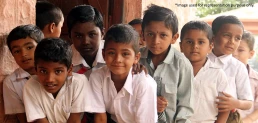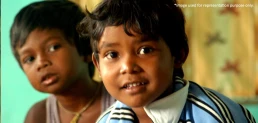Understanding India’s Child Labor Laws
Though there has been progressive development in relation to education, child growth, development, and child welfare in India, there is a severe concern about child labor. These children, instead of being in classrooms, are often seen in fields, factories, roadside stalls, or homes, exposed to danger, exploitation, and a complete lack of childhood.


Child labor deprives children of their right to education, health, protection, and opportunity. It continues to trap them in cycles of poverty, often lasting generations. Although child labor laws in India, including the Child and Adolescent Labor (Prohibition and Regulation) Act, have become more stringent, the issue is far from resolved. Multiple social and economic pressures push families to send their children to work at a young age, especially in rural or marginalized communities.
Learning the child labor laws and their practical work can be important to create a level of awareness, legal adherence, and change in the system. However, the reform of the law cannot give a full answer. Empowered communities, government intervention, access to education, and partnership with civil society should bring change at the grassroots level. That is where organizations such as CRY can be very effective.
CRY does not just push governments to pass stricter laws to prevent child labor, but it also goes to the root of the houses to empower the children, help their families, and educate the constituency.
Also Read: Child Labor
What Are Child Labor Laws and Why Do They Matter?
“Child labor laws” are legal frameworks that:
- Define minimum working ages for children and adolescents
- Ban harmful or exploitative work involving minors
- Regulate working hours and conditions for underage workers
- Specify penalties for violators
- Promote rehabilitation channels such as education and skill training
These laws matter because they:
- Prevent children from missing school
- Protect physical and mental health
- Uphold the constitutional right to education under Article 21A.
- Ensure children grow into healthy, capable adults
- Break the cycle of intergenerational poverty
Also Read: What is Child Labor
Key Laws Protecting Children from Labor in India
Child Labor (Prohibition and Regulation) Act, 1986
India’s central legislation on child labor covers:
- “Child”: Under 14 years old; “Adolescent”: 14–18 years, per Section 2 definitions
- Prohibition of child employment in hazardous occupations and processes (Part A & B of the Schedule)
- Regulation of work conditions, working hours, and break times for non-prohibited roles
- Inspection, register-keeping, and penalties under Part IV
Major Changes Under the 2016 Amendment
- An extended total ban on all work for children under 14, except in family businesses or entertainment, provided education isn’t affected.
- Introduced a special category “Adolescent” (14–18 years), restricting their employment in hazardous jobs
- Strengthened enforcement: Made offenses cognizable, increased penalties, and enabled District Magistrates to conduct inspections
- Established the Child & Adolescent Rehabilitation Fund for rescued children
- Empowered the Central Government to revise the hazardous occupations list dynamically
Also Read: Combating Child Labor for a Promising Future for India’s Children
What the Law Allows and What It Forbids
Banned Occupations and Hazardous Processes
Under the Act, children under the age of 14 are strictly forbidden:
- Mining, asbestos, and railway work
- Working with heavy objects, explosives, or poisonous chemicals
- Brickworks, steelworks, bone works, and glassworks
- Any job or procedure considered risky by the schedules listed by the government
Legal Exceptions: Family Enterprises & Entertainment
Licensed arrangements give children the permission to:
- Work in family-based companies (not hazardous) after school or holidays
- Work in audio-visual/entertaining aspects (movies, athletics) and occupations that shall not interfere with education
- Exceptions to this are only applied where work is not jeopardizing education
Work Conditions Permitted for Adolescents Aged 14–18
Non-hazardous work may be performed by adolescents (14 to 18 years); in this case, the permitted employment is strictly regulated:
- No more than 6 hours of work a day, either at school or at work
- No work during school time
- The employers need to comply with health and safety practices, yearly medical examinations, and satisfactory remuneration
Also Read: Child Labor in India
How Child Labor Laws Are Enforced?
Enforcement relies on multiple mechanisms:
- Labor Department inspections and surprise raids in high-risk sectors
- Authorized Inspectors maintain registers and file reports
- District Magistrates are authorized to inspect and act swiftly post-amendment
- Penalties include fines (up to ₹50,000) and jail terms (up to 2 years); offenses made cognizable
- National Child Labor Project (NCLP): Rescues and rehabilitates children aged 9–12 with non-formal education, midday meals, stipends, and healthcare.
Also Read: Understanding Child Labor In India
Why Child Labor Still Exists Despite Legal Provisions
Socio-Economic Pressures and Poverty
- Families in poverty rely on children to boost household income
- Lack of alternate income sources forces acceptance of child labor
- Regions affected: brick kilns, agriculture, stone quarries, small workshops
Lack of Awareness Among Families and Employers
- Many families remain uninformed about what is child labor laws
- Employers exploit legal knowledge gaps, paying children less for long hours
- Remote areas often lack access to legal literacy, registration systems
Other challenges include weak monitoring, understaffed enforcement, and exceptions (family work, entertainment) being misused, leading to child labor continuing unmonitored.
Also Read: Vaccination of Infants
CRY Efforts to Stop Child Labor
Aligned with national laws, CRY implements community-based interventions that combat child labor through education and empowerment.
Community Awareness & Mobilization
- Workshops through Village Child Rights Committees explain legal rights and penalties
- Employer awareness drives to stop the use of child labor
Enabling Education and Rehabilitation
- Support for bridge schools and vocational training for rescued children
- Educational continuation plans under NCLP and midday meal programs
Economic Support for Families
- Microgrants and livelihood programs reduce families’ dependence on child income.
- Incentive-based programs encourage school attendance.
Collaboration with Authorities
- Support District Magistrates and labor inspectors in identifying and freeing children
- Track rescued children to prevent regression into labor.
Monitoring and Strengthening Child Labor Policies
- Use ground data to strengthen the implementation of child labor laws
- Push for increased funding of NCLP and stricter labor code provisions
Your support can help end child labor. Donate to CRY America and protect every child’s right to a free and safe childhood.
Also Read: Child Labor Laws
FAQs
At what age can a child legally work in India?
As per the Child and Adolescent Labor (Prohibition and Regulation) Act, 1986, children below 14 years are not allowed to work in any occupation or process, except in family enterprises or entertainment (non-hazardous and outside school hours). Adolescents aged 14–18 years are allowed to work only in non-hazardous occupations. Hazardous jobs are strictly prohibited for all individuals under 18. These rules aim to safeguard children’s rights to education and protection.
What jobs are prohibited for children in India?
Children under 14 are completely prohibited from working in any occupation or process. The government has defined a list of hazardous occupations under the Act, including mining, bidi-making, fireworks, slaughterhouses, and working with toxic chemicals or heavy machinery. Even adolescents (14–18 years) are banned from hazardous industries. This list is reviewed periodically by the Ministry of Labor & Employment to reflect changing work environments and protect children’s physical and mental well-being.
What happens when an employer is caught using child labor?
Employers found engaging children in prohibited work can face imprisonment of 6 months to 2 years and a fine of ₹20,000 to ₹50,000 under the 2016 amendment to the Act. Repeat offenders face stricter penalties. Offenses are considered cognizable, meaning arrests can be made without a warrant. Authorities may also take steps to rehabilitate the child through education, vocational training, and compensation, as per the rules of the Child and Adolescent Labor (Prohibition and Regulation) Act.
Are children allowed to work in family businesses?
Yes, children under 14 are allowed to assist in family businesses only if the work is non-hazardous, done outside school hours or during holidays, and does not affect their education or health. “Family” refers to parents or siblings, not extended relatives or outsiders. However, this exemption is often misused, so close regulation is advised. The government monitors such cases through inspections and local child protection committees to prevent exploitation under the guise of family work.
Understanding Child Protection: Laws, Principles, and Practices
Every child deserves a beautiful, playful childhood. But every year, the lives and well-being (physical, mental, and emotional) of millions of children around the world are threatened by maltreatment such as abuse, neglect, violence, and exploitation. India has a comprehensive set of laws to protect children, and child protection is increasingly accepted as one of the core components of society. However, the implementation of these laws still remains a challenge due to insufficient resources and poor-quality prevention and rehabilitation services.


Violence takes place in all settings: school, home, childcare institutions, work, and community, too.
In this blog, we will understand what child protection is, why it is important, the role of child protection in ensuring children’s safety and well-being, and child protection laws and policies.
Also Read: School Safety and Child Protection
What is Child Protection, and Why is it Important?
Children suffer from multiple forms of violence, exploitation, and abuse. It happens in every country, and the places children should be the most protected are their homes, schools, and communities. Child protection, as the name suggests, refers to the measures and initiatives that safeguard children from violence, abuse, neglect, exploitation, and harmful practices.
Abuse and neglect can severely affect children’s lives and lead to long-term issues, including mental health issues. As adults and mentors, we have a legal and, most importantly, a moral responsibility to protect children from harm. Neglecting to safeguard children can have a massive impact and incur significant costs in the future.
Also Read: Early Childhood Education in India
The Role of Child Protection in Ensuring Children’s Safety and Well-being
Child protection plays a vital role in:
- Preventing abuse and exploitation: Through awareness, laws, and intervention programs, child protection systems prevent harm before it occurs.
- Providing rehabilitation: Children rescued from exploitative situations need psychosocial support, education, and healthcare to rebuild their lives.
- Promoting long-term development: A protected child is more likely to attend school, maintain better health, and become a productive member of society.
- Strengthening families and communities: Child protection efforts often include educating parents, empowering communities, and improving social infrastructure.
When protection is effective, children thrive. When it fails, they suffer, and so does our collective future.
Also Read: Child Rights in India
Child Protection Laws and Policies in India
India has made significant laws and many advancements in child protection, aligning many of its frameworks with international standards such as the UN Convention on the Rights of the Child (UNCRC), which India ratified in 1992. Below are some of the key laws and schemes that define the legal landscape of child protection in our country:
- Juvenile Justice (Care and Protection of Children) Act, 2015
This is the primary legislation for children in need of care and protection. It establishes mechanisms for rehabilitation, foster care, adoption, and the establishment of Child Welfare Committees. - Protection of Children from Sexual Offences (POCSO) Act, 2012
A landmark law that provides a robust legal framework to combat sexual abuse and exploitation of minors. It mandates child-friendly procedures during investigation and trial. - Child Labor (Prohibition and Regulation) Amendment Act, 2016
This law bans employment of children below 14 years in any occupation and of adolescents (14–18 years) in hazardous processes. - Prohibition of Child Marriage Act, 2006
This law seeks to eradicate the social evil of child marriage by setting a minimum legal age and establishing penalties for those who facilitate or conduct such marriages. - Right of Children to Free and Compulsory Education (RTE) Act, 2009
While not a protection law per se, access to free education up to the age of 14 is critical in safeguarding children from exploitation, child labor, and early marriage. - Integrated Child Protection Scheme (ICPS)
A government initiative to build a protective environment for children through infrastructure, trained personnel, and institutional support.
Also Read: Child Abuse Prevention: Ensuring a Safe School Environment
Principles of Child Protection
Child protection is not just about enforcing laws; it is grounded in universal principles that guide policymakers, caregivers, and communities alike. These principles ensure that children are treated with dignity, fairness, and empathy, regardless of their background.
The Right to Protection from Harm, Abuse, and Exploitation
At the heart of child protection lies the right to be protected from all forms of physical or mental violence, injury, abuse, neglect, maltreatment, and exploitation, as enshrined in Article 19 of the UNCRC. This includes:
- Protection from physical and sexual abuse: Every child has the right to a life free from violence and exploitation in the home, school, or community.
- Protection from economic exploitation: Children should not be forced into work that deprives them of their childhood or is harmful to their health or development.
- Protection during emergencies: During conflicts, natural disasters, or pandemics, children face heightened risks and must be prioritized in relief and recovery efforts.
- Protection of identity and family life: Children should be raised in a family environment, and if not, in a setting that replicates it as closely as possible.
These rights are not optional; they are fundamental. Ensuring them requires a concerted effort from governments, NGOs, communities, and individuals like you.
Also Read: Child Rights in India
How CRY America Can Help with Child Protection
CRY (Child Rights and You) America is a nonprofit organization that believes every child deserves a safe, healthy, and happy childhood. Operating in partnership with grassroots NGOs, CRY focuses on strengthening child protection systems across India, and you can help fuel this mission.
Here’s how CRY America contributes:
- Preventing Child Labor and Trafficking: CRY works with local communities to identify children at risk and intervene early. Through education, awareness drives, and family support, CRY helps keep children in school and out of exploitative labor.
- Rescue and Rehabilitation: In cases of child abuse, trafficking, or exploitation, CRY partners with rescue agencies to remove children from harmful environments. These children are then placed in rehabilitation programs that offer healthcare, education, and emotional support.
- Empowering Communities: Change happens when communities are aware and empowered. CRY invests in training community volunteers, parents, and local leaders to act as protectors for children in their areas.
- Influencing Policy and Accountability: CRY engages with local and national governments to strengthen laws, monitor implementation, and advocate for better budget allocation toward child welfare.
- Emergency Response: During COVID-19, CRY rapidly adapted its work to ensure children and their families had access to food, healthcare, education continuity, and safety measures.
Also Read: Vaccination of Infants
Why Your Support Matters
While the work CRY America does is transformative, it needs the sustained support of compassionate individuals like you. Your donation can:
- Provide education support to vulnerable children
- Fund healthcare and nutrition programs
- Help rescue children from child labor or marriage
- Train child protection workers
You don’t need to be an expert to make a difference. A small monthly donation can help safeguard a child’s future. When we protect children, we protect hope, resilience, and the promise of a better tomorrow.
Also Read: Child Labor Laws and Regulations India
Final Thoughts
Child protection is not a luxury; it is a necessity. It forms the foundation of a just, equal, and humane society. By understanding the laws, upholding the principles, and supporting the practices that safeguard children, we move closer to a world where every child can grow up free from fear and full of potential.
But laws alone can’t protect a child. It takes awareness, vigilance, compassion, and action.
Join CRY America in this life-changing journey. Educate others. Advocate for policies. Report abuse. And most importantly, donate generously. Your contribution is not just charity; it is an investment in our shared humanity.
Be the reason a child feels safe. Be the voice that stands up for justice. Be the hand that protects.
Support child protection. Support CRY America.
Also Read: Causes of Gender Inequality
FAQs
Why are child protection laws essential?
Child protection laws are crucial because they establish legal safeguards to prevent abuse, exploitation, and neglect of children. They uphold children’s rights to safety, education, and development, holding individuals and institutions accountable for harm. These laws create a legal framework for intervention, justice, and rehabilitation, ensuring children receive the care and dignity they deserve in a just and protective environment.
How can child protection be improved at the community level?
Improving child protection at the community level requires awareness campaigns, community education, and strong local reporting mechanisms. Training parents, teachers, and local leaders to recognize abuse and respond appropriately is vital. Forming child protection committees, involving youth voices, and building trust between citizens and authorities can lead to faster intervention and long-term cultural change. Empowered communities become the first line of defense for children’s rights.
What is the role of a child protection NGO?
Child protection NGOs play a pivotal role by filling gaps in government services. They rescue at-risk children, offer rehabilitation, advocate for policy reforms, and build awareness at the grassroots level. NGOs like CRY America also train communities, support school reintegration, and help enforce child rights laws. Their holistic, rights-based approach addresses both immediate needs and root causes of child vulnerability, ensuring sustainable protection and development.
How can organizations create and implement effective child protection policies?
Organizations must begin by assessing risks and identifying vulnerable points in their operations. Effective child protection policies include clear reporting procedures, staff training, background checks, and child-safe codes of conduct. Implementation requires regular audits, accountability structures, and child-friendly communication channels. Partnering with child rights experts and aligning policies with national and international standards ensures protection is proactive, inclusive, and consistently enforced.
Why parental involvement is vital for every child’s right to education
Have you ever noticed how excited kids get when they talk about their day at school? That moment when they come home bursting with stories about what they learned, who they played with, or the drawing they made in art class. Most times, all they really want is for someone to listen and show they care. And when parents do that, just by being present and interested, it makes a huge difference. Kids feel valued, and they naturally want to share more, do more, and try harder.


That’s the power of parental involvement in education. It creates a space where learning isn’t just restricted to school premises; it becomes a comfortable routine that the whole family supports. In fact, a study by the Harvard Graduate School of Education found that students whose parents are involved in their education are up to 15% less likely to miss school regularly.
In this blog, let’s understand the parents’ role in education of their child, and explore ways to encourage them to get involved in underserved communities for the holistic progress of both children and their communities.
Why parental involvement in education is essential
There’s a positive correlation between a child’s educational journey and a parent’s involvement. Let’s understand how this relationship positively impacts.
- Impact on the child’s behaviour
When parents understand the importance of education and pass that value on to their children, they tend to show fewer behavioral problems. There is a behavioral shift in terms of responsibility, self-discipline, and respect both inside and outside the classroom.
- Impact on social skills and classroom behaviour
Parents who take time to talk about school, help with group activities, or simply listen to their child’s concerns indirectly shape their social skills. These children grow more confident, cooperative, and empathetic in classroom settings.
- Impact on the classroom environment and teachers
When teachers know that parents are equally committed to the children’s growth, it encourages them to tailor their teaching strategies to meet each child’s specific needs, knowing they have the parents’ backing.
- Impact on children’s grades
Academic achievement is one of the most quantifiable outcomes of parental involvement. Students perform better in reading, writing, and practical activities, as regular interactions with their parents make them feel accountable and motivated to do better.
Roles of parents in education
Parents don’t need to be subject experts or have a certain background to support their child’s education. Every parent can play a meaningful role just by showing up in small but consistent ways. Here are a few simple ideas to begin with:
- Read with your child: Even 20 minutes a day can boost their vocabulary and spark a love for stories and language.
- Help with homework and activities: You don’t need to know all the answers. Simply guiding them on where to find help or just being there as a supporter or cheerleader can make a big difference.
- Talk about school: Ask open-ended questions like, “What made you smile today at school?” It gets them thinking and sharing more.
- Attending Parent-Teacher Meetings (PTMs) and other school functions helps build trust and gives you a clearer picture of how your child is doing.
- Encourage learning outside the classroom: Simple activities like nature walks, coloring, or visiting a museum can boost your child’s learning and curiosity. Education doesn’t have to stop when school ends.
Ways to encourage parental involvement in education in underserved communities
In many underserved communities, education often takes a backseat to early marriage or child labor. But this can change when parents are informed and encouraged to take an active role in their children’s learning. Here’s how:
- Community-Driven awareness programs
When school authorities and local leaders like the Panchayat or Village Sarpanch work together to launch programs that highlight the parents’ role in education, it builds a sense of responsibility. These efforts can include workshops, local meetups, and community radio initiatives in regional languages.
- Open parent-child communication
Creating safe spaces for conversations between parents and children encourages emotional bonding and builds a stronger foundation for educational support.
- Involving parents in career counselling sessions
When parents understand the aspirations and academic pathways of their children, they are better equipped to guide and motivate them through school and beyond, instead of disrupting their potential with child marriage or child labor.
- Advocating for education policies
When parents in underserved areas form peer groups to voice their needs for children, it results to better school facilities, transportation, or teacher availability, thus ensuring their children are not left behind.
- Encouraging participation in school functions and decision-making
Extracurricular activities planned for parents through events like sports or programs like Village Health and Nutrition Day (VHND) encourage them to demand the best for their children. When parents work closely with school authorities, they also begin to reflect on functional and infrastructural issues, which helps in evaluating and improving school strategies overall.
- Making school resources accessible
When schools share communication materials like brochures and progress reports that reflect both the school’s and the child’s development, it sparks curiosity among parents and also creates a sense of accountability for both the school and the child.
Change that CRY America brought with the parents
In a village in Korba, Chhattisgarh, the sudden transfer of two out of four schoolteachers left classrooms half empty. Children began losing interest in unattended subjects, and their right to quality education was at risk. When they shared this with their parents, the community came together and decided it was time to speak up.
With the support of CRY’s Parents’ Group and the School Management Committee (SMC), and guidance from CRY America’s Project GMSS team, the parents took action. They submitted petitions to the concerned authorities, demanding the immediate appointment of teachers. After consistent follow-ups, two new teachers were appointed. Today, 63 children are back in class, learning with confidence and without interruption.
Conclusion
Every child deserves the right to quality education, and parental involvement in education is a key pillar in making that right a reality. In underserved communities, educational qualification isn’t a barrier to parental involvement, but a lack of awareness, often rooted in poverty, is. When parents are made aware and empowered, their positivity flows down to their children and future generations.
CRY America has already made a difference by actively educating parents on the importance of their children’s education and encouraging their involvement, but the journey is far from over. Donate now to help build a world where no underserved child’s dreams are held back due to a lack of support at home.
Why Rural Women’s Empowerment Is the Key to India’s Development
Rural women's empowerment is essential for India's overall development, as it drives both economic growth and social change. In rural areas, where agriculture and allied sectors dominate, women play a crucial role in sustaining livelihoods. Despite this, gender disparities persist, hindering progress.
Empowering these women can boost productivity, improve health, and foster education, leading to more sustainable communities.
This article highlights the need to integrate women's empowerment into rural development projects to create a more inclusive and prosperous India.
Also Read: Women Empowerment Through Education
Understanding the Importance of Empowering Rural Women
Empowering rural women is essential for achieving inclusive economic growth and sustainable development in India. Rural women play a significant role in agriculture, contributing to food security, poverty reduction, and community welfare.
Despite their critical involvement, rural women face challenges such as limited access to education, healthcare, and decision-making power. Empowering them enables improved productivity, fosters entrepreneurship, and drives social change.
The Link Between Gender Equality and National Growth
Gender equality stimulates economic growth by enhancing productivity and increasing economic output. When women have equal opportunities in education, entrepreneurship, and employment, they contribute significantly to the labor force. This development leads to higher consumer spending, greater innovation, and a more diversified economy.
Women's involvement in various sectors, from business to agriculture, drives entrepreneurship and boosts overall production.
As women access better education and resources, they contribute to more balanced and competitive workforces, which create sustainable economic growth, reduce poverty, and improve national prosperity.
The Role of Women in Rural Economies
Women in rural economies are involved in agriculture, from crop cultivation to animal husbandry, to provide essential food security. Despite their efforts, their contributions often go unnoticed due to a lack of land rights and financial independence.
Women also drive local entrepreneurship, running businesses in textiles, handicrafts, and food production. They further improve healthcare by promoting maternal and child health. With access to education and resources, rural women can elevate their economic status.
Also Read: Importance & Advantages of Girl Child Education
Current State of Rural Women’s Empowerment in India
Rural women's empowerment in India has seen a notable rise through targeted training programs and self-help group initiatives. Programs like RSETI and DDU-GKY continue to strengthen rural women's economic participation.
- Heavy domestic workload limits time for income activities
- Social norms restrict career choices and mobility
- Lack of access to property affects credit eligibility
- Limited financial literacy and banking access
- Poor marketing networks reduce product visibility
Low education hinders business and tech exposure
- Scarce raw materials and high input costs hurt small enterprises
- Inadequate transport and infrastructure slow business growth
- Risk aversion and low self-confidence limit entrepreneurship
- Competition from organized sectors weakens small-scale women's businesses
Progress and Gaps in Government Policies
Government efforts in women's empowerment in rural areas have shown measurable gains, especially in skill training and entrepreneurship. Here’s how:
- Schemes like RSETI and DDU-GKY have helped improve job placement rates and created a pipeline for rural economic inclusion. However, gaps remain in policy coherence.
- Many policies support gender equality but unintentionally hinder other sustainability goals.
- Environmental targets and governance reforms often clash with empowerment goals. This reveals the need for integrated planning that aligns rural women’s empowerment with long-term development priorities.
The Benefits of Women's Empowerment in Rural Areas
Women's empowerment in rural areas boosts income, education, and social progress. In India, it improves access to opportunities, fosters independence, and reduces migration. Here are a few more benefits of women’s empowerment in rural areas:
Economic Empowerment and Poverty Reduction
Rural women's empowerment serves as a powerful catalyst for economic transformation, helping families break persistent cycles of poverty through increased financial stability and opportunity. These economic benefits manifest in several important ways:
- Women-led microenterprises in sectors like dairy production, tailoring, and food processing generate consistent household income
- Access to credit and skills training enables women to scale their operations and create employment for others
- Programs like Rural Self-Employment Training Institutes (RSETI) provide hands-on skill development that leads to sustainable job settlement
- Empowered women demonstrate improved household savings behaviors and enhanced creditworthiness
Improvements in Education, Health, and Child Welfare
Women's empowerment in rural areas creates cascading benefits for child welfare through improved educational outcomes and better health decisions at the household level. The impact of empowered women extends throughout family and community well-being:
- Literate mothers are more likely to ensure regular school attendance and complete immunization for their children
- Rural women's empowerment leads to earlier detection and treatment of childhood malnutrition and illness
- ASHA workers (Accredited Social Health Activists), often drawn from local empowered women, effectively educate families on hygiene practices and prenatal care
- Empowered mothers create a beneficial cycle by raising healthier, better-informed children who continue positive practices.
- Self-Help Groups (SHGs) promote awareness on critical issues like sanitation and nutrition, improving village-wide health standards.
Community Leadership and Decision-Making
Rural women's empowerment in India enables meaningful participation in governance structures like Panchayats (village councils) and cooperatives, bringing diverse perspectives to community decision-making. This leadership dimension delivers tangible governance improvements:
- Elected women representatives effectively advocate for essential infrastructure like sanitation facilities, schools, and water access
- Programs such as Mahila Sabha train women to assess local needs accurately and monitor the implementation of development initiatives.
- Women's leadership brings lived experience into governance, resulting in more practical and inclusive policy solutions.
- Empowered rural women help bridge the critical gap between high-level policy formulation and grassroots implementation needs.
- Women-led community initiatives often demonstrate higher participation rates and more equitable resource distribution.
Barriers to Rural Women's Empowerment in India
Rural women's empowerment in India is held back by deep-rooted patriarchy, limited education, and poor institutional support. Traditional roles restrict women from formal employment and decision-making. Some other barriers include:
Social Norms and Gender Stereotypes
Traditional gender roles in rural India fundamentally constrain women's agency and advancement by enforcing restrictive norms that limit their activities and influence. The impact of these deeply embedded social expectations is far-reaching:
- Domestic responsibilities are consistently prioritized over women's income-generating activities
- Prevailing stereotypes restrict women's freedom, mobility, and participation in community affairs
- Women advocating for change face resistance from both men and older women who have internalized inequitable norms
- Social acceptance of women in leadership positions remains discouragingly low
- Economic empowerment often fails to translate into genuine authority in family or community matters
- Gender-based discrimination persists across generations despite broader societal changes
Limited Access to Education and Employment
Educational disparities severely limit rural women's advancement opportunities, creating a cycle of disadvantage that perpetuates economic dependence. This education-employment gap creates numerous obstacles:
- Girls frequently abandon education prematurely due to poverty, early marriage practices, or safety concerns
- Female literacy rates lag behind male counterparts, narrowing future employment prospects
- Women who complete formal schooling still struggle with limited access to vocational training
- Persistent hiring biases restrict entry to formal sector employment
- Available jobs are predominantly informal, seasonal, and poorly compensated
- The disconnect between education and meaningful employment opportunities undermines economic self-sufficiency
Healthcare and Safety Issues
Inadequate healthcare access and safety concerns create significant barriers to rural women's well-being and productivity. These health and safety issues present daily challenges:
- Many villages lack female healthcare workers and essential maternal care facilities
- Coverage gaps persist despite improvements from Accredited Social Health Activists (ASHAs)
- Women's specific health needs are frequently overlooked due to societal stigma and insufficient awareness
- Travel to healthcare facilities or workplaces often exposes women to harassment risks
- Inadequate sanitation infrastructure in rural schools discourages attendance among adolescent girls
- Health challenges directly impact women's ability to participate in economic and community activities
How to Promote Women's Empowerment in Rural Areas
Below are some ways to promote women’s empowerment in rural areas:
- Build schools for girls in rural belts and ensure regular attendance
- Provide digital literacy and access to online learning tools
- Offer skill-based training like tailoring, dairy, and food processing
- Encourage women’s participation in local panchayat elections
- Ensure healthcare camps, especially for maternal and reproductive needs
- Secure land rights for women through legal awareness drives
- Launch SHGs and cooperatives with micro-loan support
The Role of NGOs and Community Initiatives in Empowering Rural Women
NGOs and community-led groups directly support rural women’s empowerment through on-ground programs. They offer skill training, legal aid, and health awareness drives, and many provide access to microcredit.
These groups also form self-help collectives that promote saving habits and financial inclusion. NGOs bridge gaps where government programs don't reach. Their local presence helps challenge gender bias through community engagement.
H2- How CRY America Supports Rural Women's Empowerment in India?
CRY America empowers rural women by strengthening their role in child development. It supports women-led community groups that monitor child health, education, and protection. These initiatives help mothers gain knowledge, confidence, and leadership.
CRY funds grassroots partners that train women in health awareness and livelihood skills. It enables them to challenge child marriage, improve school attendance, and demand better services. Through this support, CRY fosters long-term change by empowering women to lead community action and secure better futures for children.
FAQs
What are the main challenges rural women face in India?
Rural women face unequal pay, land ownership denial, poor healthcare, and limited education. Social norms restrict their mobility and participation in decision-making. Many lack access to formal credit and legal support.
How can education help empower women in rural areas?
Education builds decision-making ability, awareness of rights, and employment skills. Literate women manage finances better, access healthcare, and invest in their children's schooling. Education also reduces early marriage and dependence.
What initiatives has CRY America taken to support rural women’s empowerment?
CRY America funds programs focused on girl child education, maternal health, and income training. It partners with grassroots groups to raise awareness about rights, nutrition, and gender equality. Moreover, its community-based approach creates safer, informed, and self-reliant spaces, directly empowering rural women in underdeveloped regions.
How can I contribute to empowering women in rural communities?
You can donate to trusted NGOs, sponsor education, or support vocational training programs. Volunteering time or offering digital skills training also helps. Promoting local women-run businesses and advocating for fair policies can also be a great contribution.
Understanding the Neonatal Mortality Rate in India: Why Every Life Matters
While the neonatal mortality rate (NMR) has dropped from 52 to 28 per 1,000 live births since 1990, progress has been slow.
Poor maternal care, infections, lack of timely intervention, and weak health infrastructure continue to threaten newborn lives. Rural-urban gaps and economic inequality worsen the situation. The first 28 days of life remain the most dangerous.
This blog will delve into what NMR is, the reasons behind its stubborn numbers, and practical ways to reduce them.
Also Read: Anemia in Children
What Is Neonatal Mortality?
Neonatal mortality implies the death of a baby within the first 28 days of life. These deaths usually happen due to issues like infections, birth injuries, premature delivery, or a lack of proper medical care.
Also Read: Role of Nutrition
Definition and Global Perspective
The neonatal mortality rate (NMR) refers to the number of newborn deaths within the first 28 days of life per 1,000 live births. Globally, an estimated 2.3 million babies die during this period each year.
Most of these deaths happen in low and lower-middle-income countries.
High NMR points to poor access to healthcare, low institutional deliveries, and delayed care. Countries focusing on early antenatal checkups, skilled birth attendance, and essential newborn care tend to show lower NMR levels.
Difference Between Neonatal and Infant Mortality
Neonatal mortality refers to deaths within the first 28 days of life. Infant mortality includes both neonatal and post-neonatal deaths, covering the period from birth to one year. While both rates show the overall condition of child health, most infant deaths in India occur during the neonatal phase.
Here are some key differences between the two:
| Aspect | Neonatal Mortality | Infant Mortality |
| Age Group | Birth to 28 days | Birth to 1 year |
| Main Causes | Birth complications, infections | Neonatal causes + malnutrition, diseases |
| Indicator Used | Neonatal Mortality Rate (NMR) | Infant Mortality Rate (IMR) |
| Focus Area | Newborn health | Overall infant care |
The Neonatal Mortality Rate in India: A Closer Look
The neonatal mortality rate (NMR) currently stands at 20 per 1,000 live births. This figure accounts for over 50% of total under-five deaths.
Targeted health programs have helped reduce numbers, but progress still needs major acceleration across several regions and social groups.
Current Statistics and Trends
- NMR in India is 20 per 1,000 live births (Sample Registration System, 2020).
- Over 70% of infant deaths occur during the neonatal period.
- The first week of life accounts for nearly 75% of neonatal deaths.
- Preterm birth complications, infections, and birth asphyxia are the leading causes of neonatal mortality.
- Girls face higher mortality due to gender-based disparities in care.
Major Causes of Neonatal Mortality in India
Most neonatal deaths in India occur within the first 24 hours of birth. Some major reasons behind this are:
Premature Birth and Low Birth Weight
Over 3.5 million babies in India are born preterm each year. Nearly half of neonatal deaths are linked to low birth weight and early delivery. These babies often need extended support after birth, including temperature regulation, feeding assistance, and infection control.
Many are discharged from Special Newborn Care Units while still vulnerable. Without consistent postnatal care and monitoring, risks of stunting, cognitive delays, or early death remain high. Strengthening maternal nutrition and antenatal care can reduce these risks significantly.
Infections and Birth Complications
Neonatal sepsis, pneumonia, and birth asphyxia contribute to a large number of newborn deaths. Poor hygiene during delivery, delayed breastfeeding, and lack of antibiotics increase infection risk. Additionally, inadequate handling of birth complications like obstructed labor can result in brain damage or death.
Lack of Access to Quality Healthcare
Many newborn deaths stem from gaps in quality rather than a lack of access. Although institutional births have increased, many facilities lack trained staff and functioning equipment. In rural and tribal areas, care remains particularly patchy.
For example, only 42.6% of newborns receive early breastfeeding, along with this, stillbirths and preventable deaths from asphyxia point to poor delivery standards.
Social Determinants and Maternal Health
Maternal health, poverty, and social inequity directly impact newborn survival. Women from tribal or poor communities often give birth at home without skilled help. These births carry higher risks of complications and death. Girls face more neglect, reflected in higher under-five mortality among females.
Early marriage, poor nutrition, and limited mobility worsen outcomes for mothers and babies.
Also Read: Prioritizing Health and Nutrition for At-Risk Children in India
Why Every Life Matters: The Human Cost of Neonatal Deaths
Neonatal deaths often go unreported or unnoticed, yet each loss reflects a failure in basic healthcare access. These deaths affect mothers mentally, strain families financially, and signal deeper public health gaps.
However, a lot of these deaths are preventable through timely care, clean deliveries, and maternal support. When society invests in neonatal care, it prevents lifelong trauma, builds healthier communities, and affirms that every child, regardless of where they’re born, deserves a fighting chance to live.
Strategies to Reduce Neonatal Mortality in India
India’s neonatal mortality rate remains high due to factors like low birth weight, birth asphyxia, and infections. The government aims to address this by enhancing perinatal care and improving maternal health.
Similarly, increasing access to proper facilities and encouraging skilled birth attendance are essential steps for reducing neonatal deaths in both rural and urban areas.
Some other measures include:
- Training traditional birth attendants.
- Providing nutritional supplements for pregnant women.
- Ensuring adequate rest and healthcare during pregnancy.
- Establishing a reliable referral system for high-risk pregnancies.
- Raising awareness through mass communication about neonatal care.
How Can CRY America Help Combat Neonatal Mortality in India?
CRY America can be crucial in addressing neonatal mortality in India by strengthening healthcare systems in rural and underserved areas. Through its partnerships, CRY America helps improve maternal health services, ensuring expectant mothers access proper prenatal and postnatal care.
By focusing on improving immunization coverage, promoting safe childbirth practices, and supporting healthcare infrastructure, CRY America works to reduce neonatal deaths. Additionally, it educates communities on the importance of early healthcare intervention and neonatal care, empowering families to seek timely medical attention for newborns. Donate online to NGO.
FAQs
How is neonatal mortality different from infant mortality?
Neonatal mortality refers to deaths within the first 28 days of life. Infant mortality includes deaths within the first year. Neonatal deaths form a major share of infant deaths, often due to birth complications, infections, or prematurity. Infant mortality also includes post-neonatal causes like malnutrition or late-onset diseases.
What steps can be taken to reduce neonatal deaths?
Key measures include improving maternal nutrition, increasing skilled birth attendance, ensuring access to neonatal intensive care, and promoting early breastfeeding. Strengthening primary health care, ensuring clean delivery environments, and timely identification of infections also help.
How does CRY America contribute to lowering neonatal mortality?
CRY America funds grassroots health programs in underserved areas. It supports maternal health awareness, prenatal care, safe deliveries, and newborn monitoring. CRY also trains health workers, ensures immunization, and facilitates institutional births.
















